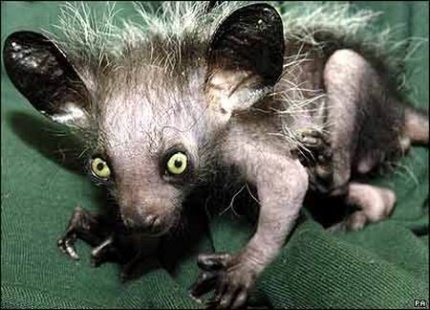Конспект уроку для 9 класу з теми "Магія природи" (урок 2)
До вашої уваги пропоную другий урок у циклі уроків до теми "Magic Nature" підручника Алли Несвіт. В уроці вміщено цікаві завдання та малюнки для розвитку критичного мислення у дітей.
Урок 2
Тема: Магія природи
Підтема: Природний заповідник Асканія Нова
Тип уроку: урок практичного використання умінь і навичок іншомовної
комунікативної компетентності.
Мета: вдосконалювати навички вживання нових лексичних одиниць, вдосконалювати навички усного мовлення й читання, розвивати вміння працювати в групі, розвивати критичне мислення, уяву та увагу учнів, прищеплювати любов до природи, виховувати відповідальність за долю довкілля, зацікавленість у розширенні своїх знань.
Очікувані результати: на кінець уроку учні володітимуть інформацією про природний заповідник Асканія Нова, зможуть розрізняти ссавців, рептилій, комах, риб та амфібій, навчаться користуватися пошуковою системою в Інтернеті та знаходити корисну інформацію для використання в реченнях на уроці.
Обладнання: підручник для 9 класу А.Несвіт, картки для роботи в парах, для самостійної роботи, картки для індивідуальної роботи, малюнки.
ХІД УРОКУ
І. Підготовка до сприйняття іншомовного мовлення
Greeting Good morning, everyone. How are you getting on? (students answer teacher`s questions). So, let`s start our lesson. We have a lot of work to do.
Aim: T: Mother Nature works in mysterious ways. Humans, animals, plants, insects, microorganisms, the ocean, and so much more – it nurtures them all. Amongst her creations are the exquisitely beautiful, the fascinating and the wondrous! Today we continue to speak about nature and we will discuss how people can protect flora and fauna of our planet.
Warming up: Look at this picture and think is it a real animal? Where can it inhabit? If it is real, what kind of animal is it?
![]()

T: This is the Aye-Aye. Found only on the island of Madagascar, it is a rare kind of lemur. They are usually dark brown or black, with a bushy tail that is bigger than their body. The Aye Aye also have really big eyes, slender fingers, and large, sensitive ears. It is the world’s largest nocturnal primate.
II. Основна частина уроку
- Checking homework. Teacher checks the students` homework. Some students read their articles about city ecological problems.
2. Vocabulary: T: Please, read the names of the different species of animals and plants on ex.1, p.44 and:
- list five animals you can see;
- find something that isn`t an animal;
- divide all the species into 3 groups (such as mammals, birds, plants)
|
Mammals |
Birds |
Plants |
|
|
|
|
- make up sentences with the words like an in example
e.g. I can see a ____ at the Zoo… (in the Safari park, on a farm, in the wild, etc)
3. Pre-reading: T: Before the reading an article about the Ascania Nova, look through the article quickly and find all animals and make a list. (ex.2, p,44)
4. Follow-up: (work in groups) T: Google the names of the plants to find out more information about them
|
Animal or a plant |
Which group belongs |
Description (how it looks like) |
Interesting facts about it |
|
|
|
|
|
|
|
|
|
|
|
|
|
|
|
5. Speaking: T: Each group can choose one or 2 species of animals or plants and present it. The rest of the class should guess about what animal they are talking about.
6. Reading: T: Now read the text of ex.3, p.44-45 and choose the most suitable heading from the list (A-F) for each part of the article (1-4). There is one extra heading which you don’t need.
7. After-reading: T: Look through the text of ex.3 again and try to explain the meaning of the highlighted words.
8. Writing: T: Using the words from the text translate the sentences into English.
1. Територія заповідної зони розкинулася на сотні кілометрів.
2. В степах на північ від моря можна знайти багато різних видів тварин.
3. 200 гектарів парку зайняті рідкісними рослинами.
4. Ви знали, що ці види тварин занесені до Червоної книги?
5. Чимало людей працюють, щоб захистити тварин та надати їм притулок.
III. Заключна частина уроку
1. Summarizing: T: Our lesson is almost came to the end. Thank you for your work. We have done a lot at the lesson today. The most active were….
T: Lets try to describe an animal using these words and small plan:
This animal is …
It has … ….
It lives ….
It eats ….
2. Homework: T: your homework for today will be ex.5, p.46 (you have to find a word or a phrase in the article about Ascania Nova that has similar meaning to each of the following words and phrase) and find an information about rare animal from the natural reserve Ascania Nova and write a little article to the school Internet blog.
ДОДАТКИ
Cards for the individual work
1. List the animals under the categories. Find the extra word.
Frog, lion, flamingo, beetle, cheetah, tiger, butterfly, swan, ant, whale, fly, lizard, fox, salmon, crocodile, eagle, goat, python, rhino, tarantula, turtle, bear, shark, dolphin.
|
Mammals |
|
|
Amphibians |
|
|
Fish |
|
|
Birds |
|
|
Insects |
|
|
Reptiles |
|
|
Non |
|
Key: Mammals: lion, cheetah, tiger, whale, fox, goat, rhino, bear, dolphin,
Amphibians: frog,
Fish: salmon, shark,
Birds: swan, flamingo, eagle,
Insects: beetle, butterfly, ant, fly,
Reptiles: lizard, python, crocodile, turtle,
Non: tarantula
2. Identifying animals. If you need you can goole the information about animals. Write 5 sentences about these animals and then ask 5 question about these animals (the rest of the class have to guess what animal is this)
|
|
hair |
feathers |
scales |
other |
|
fish |
|
|
+ |
|
|
bird |
|
|
|
|
|
frog |
|
|
|
|
|
mouse |
|
|
|
|
|
snake |
|
|
|
|
|
|
legs |
wings |
fins |
|
fish |
|
|
+ |
|
bird |
|
|
|
|
frog |
|
|
|
|
mouse |
|
|
|
|
snake |
|
|
|

про публікацію авторської розробки
Додати розробку
